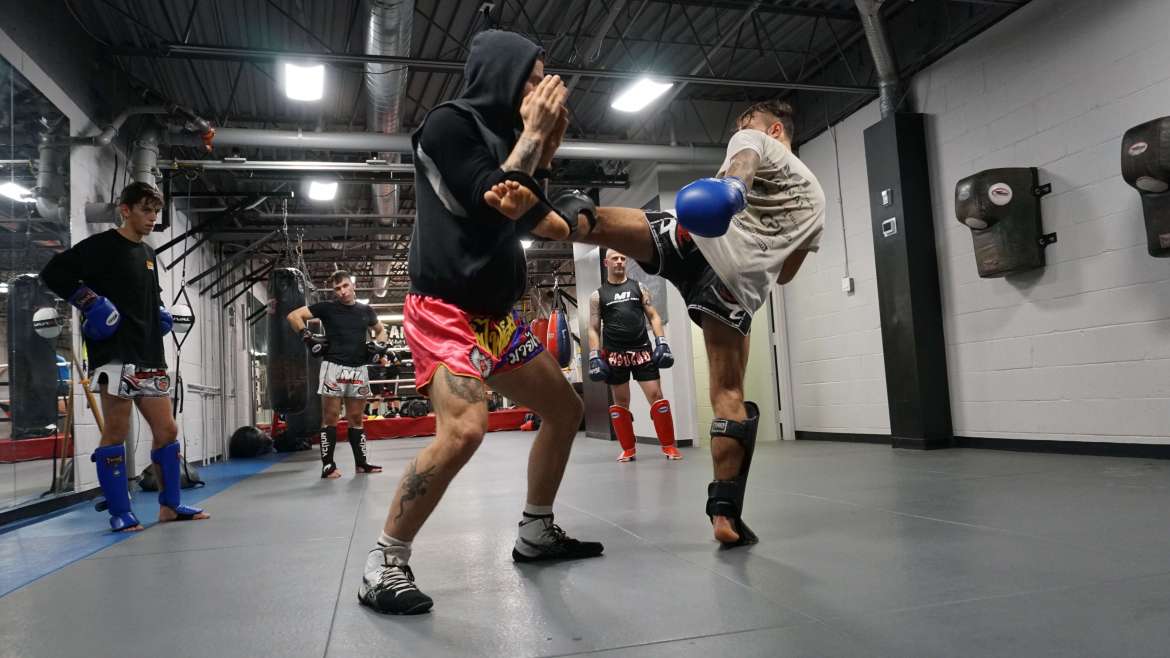If you’re exploring combat sports and wondering which discipline suits you best, you might be torn between Muay Thai and Kickboxing. Both martial arts are renowned for their striking techniques and effectiveness in both fitness and competitive arenas. In this blog post, we’ll delve into the key differences between Muay Thai and Kickboxing, helping you understand their unique features and benefits.
Understanding Muay Thai
Muay Thai, also known as the “Art of Eight Limbs,” is a traditional Thai martial art with deep cultural roots. This combat sport utilizes punches, kicks, elbows, and knee strikes, making it one of the most versatile and effective striking systems.
- Techniques: Muay Thai emphasizes a range of striking techniques, including powerful elbow strikes, knee strikes, and clinch fighting. The clinch is a distinctive feature where fighters use close-range techniques to control their opponents.
- Training Focus: Training in Muay Thai often includes heavy bag work, pad work, and clinch drills. The emphasis is on building power, endurance, and the ability to withstand and deliver powerful strikes.
- Cultural Significance: Originating from Thailand, Muay Thai is deeply intertwined with Thai culture and traditions. Traditional rituals, such as the Wai Kru (a pre-fight dance) and respect for trainers, are integral to the sport.
Exploring Kickboxing
Kickboxing is a modern martial art that combines elements of traditional boxing with kicking techniques. It has evolved into various styles, such as American Kickboxing, Japanese Kickboxing, and Thai Kickboxing, each with its own unique rules and techniques.
- Techniques: Kickboxing focuses on punches and kicks, often with less emphasis on elbow and knee strikes compared to Muay Thai. Techniques include powerful roundhouse kicks, side kicks, and high kicks.
- Training Focus: Kickboxing training typically involves a combination of cardiovascular conditioning, strength training, and technique drills. The sport is known for its high-intensity workouts and emphasis on footwork and agility.
- Varied Styles: Kickboxing has several styles, such as American Kickboxing, which incorporates more boxing techniques, and Thai Kickboxing, which shares similarities with Muay Thai but with some differences in technique and strategy.
Key Differences Between Muay Thai and Kickboxing
- Striking Techniques:
- Muay Thai: Utilizes punches, kicks, elbows, and knees, with a strong emphasis on clinch fighting.
- Kickboxing: Primarily focuses on punches and kicks, with varying degrees of emphasis on different styles depending on the discipline.
- Clinch Work:
- Muay Thai: Incorporates extensive clinch work, where fighters use the clinch to control and strike opponents.
- Kickboxing: Clinch work is less prominent and often limited to brief exchanges.
- Cultural and Historical Background:
- Muay Thai: Rich in tradition and cultural significance, with historical roots in Thailand and traditional practices.
- Kickboxing: A more modern sport with roots in various martial arts, often emphasizing practical self-defense and fitness.
- Training Methods:
- Muay Thai: Training includes a significant amount of clinch work and traditional techniques.
- Kickboxing: Training focuses on high-intensity workouts, footwork, and agility drills.
Both Muay Thai and Kickboxing offer unique benefits and experiences for practitioners. Muay Thai provides a rich cultural experience and a comprehensive striking system with a strong emphasis on clinch work. Kickboxing offers a dynamic, modern approach to striking with a focus on fitness and agility.
Whether you choose Muay Thai or Kickboxing, both martial arts can enhance your physical fitness, self-defense skills, and mental discipline. If you’re interested in exploring either discipline further, consider joining a local class to experience the techniques and training firsthand.

